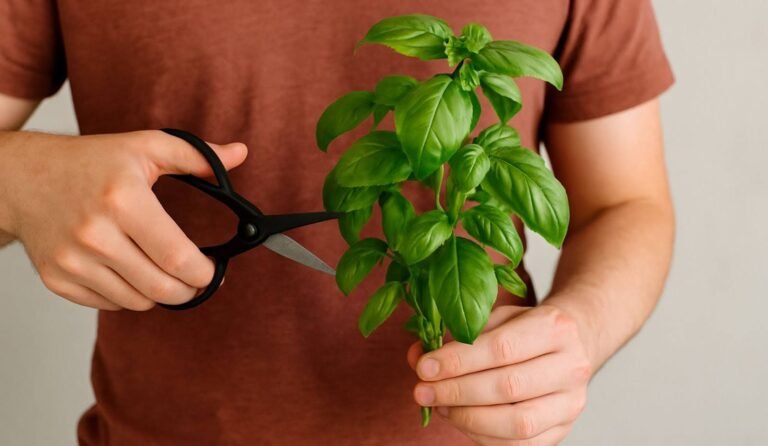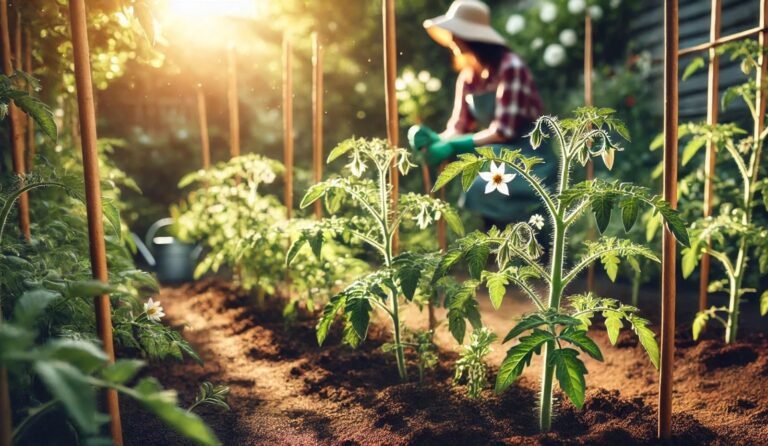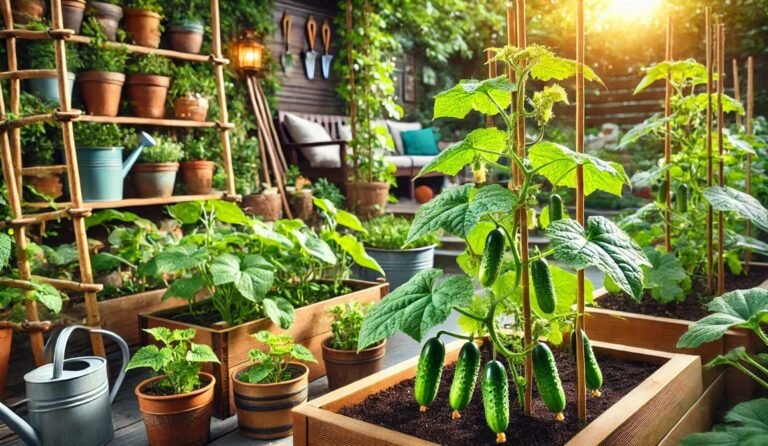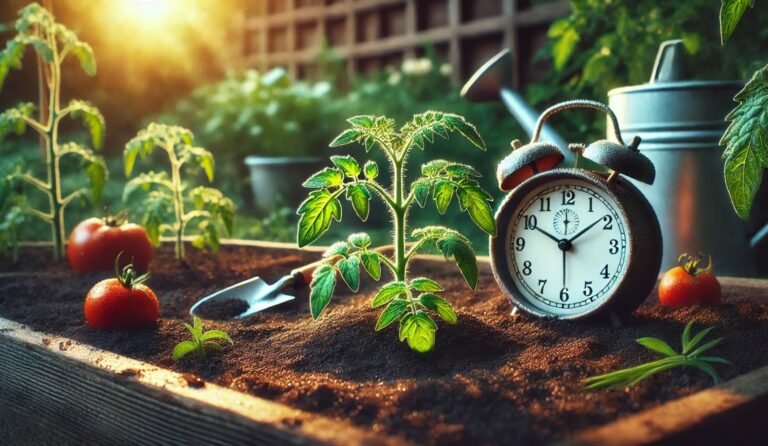Red Ginger Plant Care: Easy Tips for Vibrant Growth
The red ginger plant is a tropical showstopper that brings a burst of bold, exotic color to any space. Its vibrant red flowers and lush green leaves make it a favorite among gardeners craving that jungle vibe. Whether you’re sprucing up your backyard or adding a pop of life indoors, this plant’s got you covered.
But here’s the thing — getting it to thrive isn’t just about planting and hoping for the best. You need to know the tricks to keep it looking its best year-round. Ready to unlock the secrets to growing stunning red ginger plants? Let’s dive in!
What Is a Red Ginger Plant?
The red ginger plant, scientifically known as Alpinia purpurata, is a tropical flowering plant native to the Pacific Islands and Southeast Asia. It is renowned for its bold, bright red bracts (often mistaken for flowers) that surround the true, small white flowers tucked within. The plant’s lush green leaves add to its exotic appearance, making it a popular choice for both gardens and indoor decor.
Red ginger plants are commonly grown for ornamental purposes, as their eye-catching flowers can last for weeks or even months. They thrive in warm, humid climates and are often seen in tropical gardens or as potted houseplants. Aside from their aesthetic appeal, red ginger plants are relatively easy to care for, making them a favorite among gardeners who want a touch of the tropics in their backyard or living space.
Benefits of Growing Red Ginger Plants
The allure of red ginger plants goes beyond their stunning looks. These plants are not only beautiful but also beneficial in several ways.
1. Aesthetic Appeal
There’s no denying the visual impact of a red ginger plant. The vibrant red flowers contrast beautifully against the glossy green leaves, creating a striking focal point in any garden or indoor space. Their exotic charm is perfect for tropical-themed landscapes, patios, or even as an indoor statement piece.
2. Medicinal and Health Benefits
Red ginger root is more than just a beautiful addition to your garden. In traditional medicine, it’s valued for its potential health benefits. Some cultures use red ginger root to alleviate digestive issues, reduce inflammation, and boost immunity. While scientific evidence is still limited, anecdotal reports and traditional practices highlight its versatile medicinal uses.
3. Versatility and Adaptability
One of the best aspects of the red ginger plant is its versatility. You can plant it directly in the ground if you live in a warm, tropical climate, or grow it in a pot to keep indoors or on a patio. Their adaptability makes them suitable for various environments, provided the basic care requirements are met.
4. Low Maintenance
Once established, red ginger plants are relatively low-maintenance. They’re hardy, resistant to many common pests, and don’t require constant attention. This makes them ideal for busy gardeners who still want a lush, vibrant garden without putting in too much effort.
Popular Varieties of Red Ginger Plants
Red ginger plants come in several varieties, each with its own unique appearance and characteristics. The two most common types are the Jungle King and Jungle Queen varieties.
Jungle King
The Jungle King variety is known for its tall, upright growth and bold red flowers. This type can reach heights of up to 12 feet in optimal conditions, making it a grand and imposing presence in any garden. The bracts are intensely red and form dense clusters, giving the plant its regal appearance.
Jungle Queen
In contrast, the Jungle Queen variety is slightly smaller, typically reaching heights of 4 to 6 feet. Its flowers are more delicate and often have a pinkish-red hue. This variety is ideal for smaller gardens or potted indoor plants, where space may be limited.
Choosing the right variety largely depends on your available space and the aesthetic you’re aiming for. Both varieties are equally beautiful and offer the same tropical flair.
Ideal Growing Conditions for Red Ginger Plants
Creating the right environment is crucial for your red ginger plant to thrive. Since these plants are native to tropical regions, they naturally favor warm, humid conditions with filtered sunlight. Let’s break down the essential factors you need to consider:
Climate and Temperature
Red ginger plants are best suited for USDA hardiness zones 9 through 12. They thrive in temperatures between 70°F and 85°F and can suffer damage when exposed to temperatures below 50°F. If you live in a colder climate, consider growing your red ginger plant indoors or in a greenhouse.
Light Requirements
While red ginger plants love bright light, they don’t do well in direct sunlight for long periods. Instead, they prefer partial shade or dappled sunlight. Too much direct sun can scorch the leaves and cause the vibrant flowers to fade. Indoors, place the plant near a bright, east-facing window where it can receive indirect light.
Soil Requirements
Red ginger plants prefer rich, well-draining soil that’s high in organic matter. Loamy or sandy soil mixed with compost works well. The ideal pH range is between 6.0 and 6.8, slightly acidic but not too extreme. Adding mulch around the base of the plant can help retain moisture and regulate soil temperature.
Watering Needs
These plants love moisture, but they don’t appreciate soggy soil. Water them thoroughly once or twice a week, depending on the weather and indoor conditions. The key is to keep the soil consistently moist without letting it become waterlogged. During dry spells or hot weather, increase watering frequency.
Planting Red Ginger Plants
Planting your red ginger plant properly ensures robust growth and vibrant flowers. Whether you’re planting from rhizomes or nursery plants, following these steps will set your plant up for success.
Planting from Rhizomes (Red Ginger Root)
- Select Healthy Rhizomes: Choose plump, firm rhizomes with visible buds or eyes.
- Prepare the Soil: Amend the soil with compost to enrich it.
- Dig a Hole: The hole should be about 3 inches deep and twice the width of the rhizome.
- Planting: Lay the rhizome horizontally with the buds facing up. Cover lightly with soil.
- Water Gently: Water immediately after planting to help the soil settle.
Planting Nursery Plants
If you’re starting with an established plant from a nursery, gently remove it from the pot and loosen the roots before planting. Dig a hole that’s slightly larger than the root ball and place the plant inside, filling in the gaps with rich, well-draining soil. Water thoroughly and mulch around the base.
Caring for Red Ginger Plants
Proper care is crucial for maintaining the health and vibrancy of your red ginger plant.
Fertilizing
Feed your plant every two to three months with a balanced, slow-release fertilizer. Organic options like compost or well-rotted manure are also excellent choices. Avoid high-nitrogen fertilizers as they can promote foliage growth at the expense of flowers.
Pruning and Maintenance
Regularly remove dead or yellowing leaves to encourage new growth. Cut back flower stalks once they’ve faded to maintain a tidy appearance and promote more blooms.
Pest and Disease Management
Red ginger plants are generally resilient, but they can be affected by spider mites or aphids. Regularly inspect the leaves for signs of pests and treat with insecticidal soap if necessary. Fungal issues can arise if the soil is too wet, so ensure proper drainage and avoid overwatering.
Growing Red Ginger Plants Indoors
Growing red ginger indoors is entirely possible and can be incredibly rewarding. Use large, well-draining pots and rich, organic potting mix. Position your plant in a bright, warm room with plenty of indirect light. To boost humidity, mist the plant regularly or place it near a humidifier.
Red Ginger Root Plant
The Red Ginger Root Plant (Alpinia purpurata), also known as Ostrich Plume or Pink Cone Ginger, is a stunning tropical perennial native to Southeast Asia and the Pacific Islands. Recognized for its tall, vibrant red or pink flower bracts and lush green foliage, it is widely grown for ornamental purposes in tropical and subtropical climates.
This plant thrives in warm, humid environments with well-drained, fertile soil and partial shade, growing up to 15 feet tall under ideal conditions. While it shares its family with culinary ginger, its rhizomes are not typically used in cooking, though the plant holds some value in traditional medicine.
Red ginger is propagated through rhizome division or offsets and requires regular watering, pruning, and feeding during the growing season. With proper care, it makes a bold, exotic statement in gardens, landscapes, and floral arrangements.
Red Ginger Plant Flower
The red ginger plant flower, often mistaken for the actual flower, is a vibrant, eye-catching bract that comes in shades of deep red to pink and sits atop tall, leafy stalks. The true flowers are small, white, and typically nestled within the colorful bracts, which serve to attract pollinators and add dramatic flair to gardens and floral arrangements.
These long-lasting bracts make red ginger a favorite in tropical landscaping and exotic bouquet design. Blooming year-round in warm climates, the red ginger flower symbolizes strength and passion and thrives best in humid, shaded environments with well-drained soil and consistent moisture.
Propagation Tips
Propagating red ginger plants is relatively straightforward. The most common method is dividing the rhizomes. Gently dig up the plant, cut the rhizome into sections with at least one growth bud per piece, and plant them in new locations. Water thoroughly and keep the soil moist until new shoots appear.
Common Problems and Solutions
Yellow Leaves: Often caused by overwatering or poor drainage. Reduce watering and improve soil aeration.
No Flowers: Lack of blooms can result from insufficient light or over-fertilization. Adjust light exposure and avoid excessive feeding.
Root Rot: Caused by waterlogged soil. Repot the plant with fresh, well-draining soil and cut off any affected roots.
FAQ
What is a red ginger plant?
A tropical plant known for its vibrant red bracts and lush green foliage.
How tall do red ginger plants grow?
They can grow between 4 to 12 feet, depending on the variety and conditions.
Can I grow red ginger indoors?
Yes, as long as it gets bright, indirect light and high humidity.
How often should I water my red ginger plant?
Water 1-2 times a week, keeping the soil consistently moist but not soggy.
Why are my red ginger plant leaves turning yellow?
Usually from overwatering, poor drainage, or lack of nutrients.
Do red ginger plants need direct sunlight?
No, they prefer partial shade or filtered sunlight to thrive.
Can I grow red ginger from store-bought ginger root?
No, red ginger is different from edible ginger and needs specific rhizomes.
Final Thoughts
The red ginger plant is a fantastic addition to any garden or home. With its vibrant colors and low-maintenance nature, it’s no wonder it’s a favorite among tropical plant enthusiasts. By following this guide, you’ll be well-equipped to grow and care for your own red ginger plant, whether indoors or out. Happy gardening! Let me know if you need more tips or have any questions about your red ginger journey.







